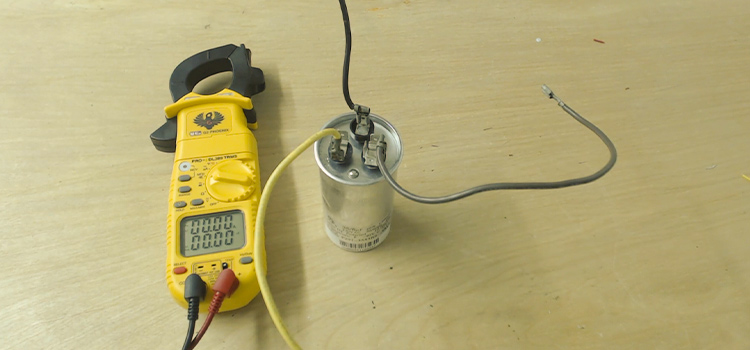Can I Use a 7.5 Capacitor in Place of a 5? | Is Higher Better?
Yes, you can use a 7.5 capacitor in place of a 5. But in most cases, it is determined by other capacitor specifications, such as voltage, as well as the application. When capacitance increases in a capacitive circuit, the capacitive reactance XC decreases, causing the circuit current to increase and vice versa.
If the capacitor is part of a tuned filter, the difference may be significant enough to limit the intended accuracy. If it is used to reduce ripple in a power circuit, this slightly higher number may have no effect and may even be an improvement.

What are the Effects of Installing a 7.5 Capacitor in Place of a 5?
Capacitive reactance is the complex impedance of a capacitor whose value varies with frequency. When the capacitance of a circuit increases, the current also increases and it decreases when the capacitance of that circuit decreases.
Capacitive reactance is a kind of resistance. When resistance increases, the circuit current decreases, and vice versa. Capacitance is inversely proportional to the capacitive reactance.
C ∝ 1 / XC
Current is directly proportional to the capacitance and inversely proportional to the capacitive reactance.
I ∝ C and I ∝ 1/XC
So, a 7.5 capacitor can be used in place of a 5 capacitor but the current of the circuit will increase leading to an increase in torque and loss.
What Happens if You Use a Bigger Capacitor Than the Recommended One?
A too-big capacitor can increase energy usage. If the motor is too big or too little, its life will be cut short. A 7.5 mF capacitor will not power a motor that requires a 4.0 mF capacitor. This is not to say that greater is better, because an overly large capacitor might increase energy usage.
Motor manufacturers test motor and capacitor combinations for many hours to find the most efficient combination. Replacement-start capacitors have a microfarad rating tolerance of +10%, but exact run capacitors must be replaced.
Can I Replace a Capacitor With a Higher µF Rating?
You can replace electric motor start capacitors with µF or mF ratings equal to or up to 20% higher F than the original capacitors powering the motor. The replacement capacitor’s voltage rating must be equal to or greater than the original.
Can I Replace a Capacitor With a Lower µF?
Lowering the µf value may cause the circuit to malfunction or possibly stop working entirely. The following are examples of the consequences that reducing a capacitor’s µf might have on various circuits.
- You will very certainly change the resonant frequency, rendering the system inoperable by lowering the capacitance of a resonant circuit.
- Reducing the µf of the capacitor will influence the timing intervals, which may be good or harmful depending on the application’s requirements.
- Because the capacitor values are chosen specifically, this would have a significant impact on an amplifier circuit’s operation.
If the capacitor value affects factors like tuning or timing in a circuit, it is recommended not to reduce the capacitance. Sure, lowering the µf by a small amount may not have a significant impact, but these small alterations will add up in the end.
What Happens if You Have Too Much Capacitance?
If the output smoothing capacitor is too large, it will absorb all of the voltage regulator’s current when the circuit first powers up. Although the capacitor eventually charges and the output voltage rises, having the voltage output rise slowly can cause issues.
For starters, it may not be acceptable for the circuit to take so long to activate. Furthermore, various devices powered by the same regulator will turn on at different voltages as the capacitor charges, causing some desynchronization that could be problematic.
Conclusion
The charge/discharge rate of a capacitor will be slower if the capacitor is larger. Because smaller capacitors have lower ESL, they have greater resonance points and are therefore better for high-frequency bypassing. The cap’s design can also reduce ESL and hence improve high-frequency performance.
Subscribe to our newsletter
& plug into
the world of circuits